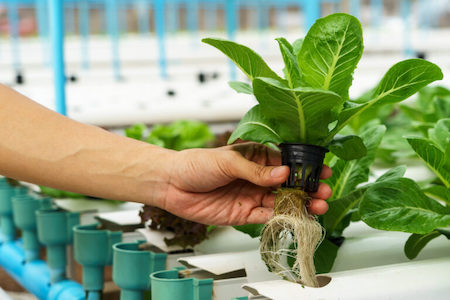Fertilization with organic fertilizer
Premixing with soil
About 1% of fertilizer in the soil. Mix 250 ml (cup) of fertilizer with 30 liters of soil (cube with an edge of 31 cm). It is possible to add more fertilizer according to preferences. In general, a useful ratio is 1-5%. With a stronger concentration, you will not burn the flowers, but it is unnecessary to fertilize where it is not necessary. I encourage you to read our articles on plant nutrition .
Watering - Flowerpots, boxes, trees and shrubs
Add 4 teaspoons of fertilizer to 4 liters of water (1 teaspoon of fertilizer / 5ml per liter of water). Stir and let stand for 30 minutes. Apply with a teapot and do not water the edible parts of the plants (lettuce leaves, etc.). You will learn how to properly fertilize houseplants in one of articles .
Surface application for fruit vegetables and lawns
Sprinkle around the plants or directly on the lawns and water thoroughly. Do not sprinkle on the edible parts of the plants (lettuce leaves – it will rain badly, nothing will happen to the leaves). Fertilize less than on video. Make sure the fertilizer layer is not thick. It then decomposes better.
In the case of lawn for April fertilization[4-5g N/m2] you need 1.43L of fertilizer per 100 m2 of lawn. You will learn how to fertilize the lawn in one of articles .
Hydroponics

Add 500ml of fertilizer to 120 liters of water. Add directly to tank or drain systems. It is best to leach or drain the fertilizer during hydroponics. It is possible to leave the fertilizer in water, but in this case the fertilizer may smell for a few days and only then will everything return to normal (in this case, shallow containers are needed to get the roots to the fertilizer at the bottom). In general, the fertilizer is a supplementary fertilizer for hydroponics or aquaponics.
Insect tea / root bay
Use 250 ml of fertilizer per 60 liters of water. Infuse the fertilizer with aquarium aeration for 24 hours to achieve mushroom insect tea. Use the lye as a root bay. You can use the remaining leachate from the leach bags as a surface fertilizer.


